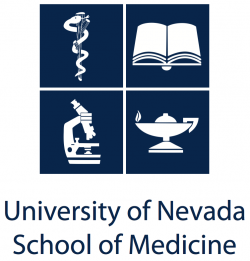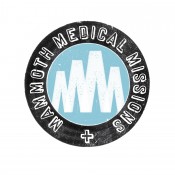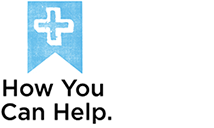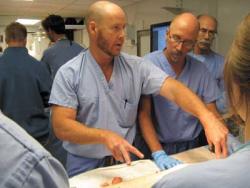Austere Medicine is the practice of medicine in challenging, resource-constrained environments with minimal or no infrastructure, such as in remote or wilderness areas, in rural areas of developing countries, in war, or in the wake of widespread disaster or mass casualty events.
International
Disaster & Austere Medicine Conference
————————————
MISSION: The mission of the International Disaster and Austere Medicine Conference (IDAMC) is to bring together professionals in the fields of disaster, wilderness, expedition and global medicine from around the world for a collaborative dialogue exploring deployment protocols, lessons learned, best practices, and innovative strategies for the efficient and ethical delivery of medical care to remote, underserved populations and in complex widespread humanitarian emergencies.
KEYNOTE SPEAKER: Geoffrey Tabin, MD
Geoffrey C. Tabin is a Professor of Ophthalmology and Visual Sciences, and Co-Director of the Outreach Division at the John A. Moran Eye Center, University of Utah. He specializes in cornea, cataract, and refractive surgery.
Dr. Geoffrey Tabin is the co-founder of the Himalayan Cataract Project and co-leads the International Division of the John A. Moran Eye Center as part of his vision to provide high quality ophthalmic care, education, and establishment of a world-class eye care infrastructure. Dr. Tabin graduated from Yale College, earned a M.A. in philosophy at Oxford as a Marshall Scholar, and then his M.D. from Harvard Medical School. He interned at the University of Colorado at Denver and Health Sciences Center in surgery and completed residencies at Brown University School of Medicine in ophthalmology and Michael Reese Hospital in orthopedic surgery. Dr. Tabin was awarded a fellowship in ophthalmology at Royal Victorian Eye and Ear Hospital. He practices at the Redstone Health Center, Moran Eye center Clinic, Park City, Utah.
ABOUT: Conceived by Mammoth Medical Missions and accredited by the University of Nevada School of Medicine, the IDAMC is inspired by the experiences of MMM’s foreign medical teams (FMT’s) on deployments to underserved areas in austere environments. Whether responding to humanitarian emergencies or providing medical care and training to underserved populations in isolated communities, delivering international medical relief in austere environments to populations in need continues to present significant challenges to the FMT operating in today’s global environment. This year’s conference represents an exciting new approach to improving and innovating such deployments by uniting the fields of austere, expedition, global and wilderness medicine to enhance readiness and effectiveness of rapidly-deployed FMT’s to widespread environmental disasters and other complex humanitarian emergencies.
Beginning with keynote speaker Geoffrey Tabin, MD., this year’s IDAMC will approach this complex equation from multiple perspectives, including logistics, diplomacy, patient tracking and follow-up strategies, medical record-keeping in the field, medical ethics, resource allocation in austere settings, safety and security in politically unstable environments, and how these evolving issues relate to current international protocols that have been established for FMT’s and other humanitarian relief entities.
At the end of the course (Day 3), participants will work through a simulated disaster scenario — along the lines of what MMM’s team experienced in the wake of Super Typhoon Haiyan in the Central Philippines. Scenario includes mass casualty/field triage pressure exercises with distracting loud sounds, smoke, limited resources, and approximately 5-9 major casualty patients.
2014 lecturers included Mike Karch, MD, founder of Mammoth Mass Casualty Seminar, and Captain Joseph G. McQuade, M.D., Director of Public Health for the U.S. Navy, discussing triage processes used in Iraq, as well as how to prepare a medical response to a dirty bomb or nuclear accident.
** A limited number of slots will available for qualified participants (physicians, RNs, PAs, surgical techs) to receive 21.00 AMA PRA Category 1 Credits™ through the University of Nevada School of Medicine. CE’s will also be available for for limited number of EMR/ EMT/ Paramedics through Northern Inyo Hospital and under ICEMA / CA EMSA guidelines
All proceeds benefit Mammoth Medical Missions, Inc., 501(c)(3), and its ongoing mission to improve medical and surgical care for underserved populations and those affected by widespread disaster.
Click here for 2016 seminar schedule
Click here for lodging and travel logistics information

**This activity has been planned and implemented in accordance with the Essential Areas and Policies of the Accreditation Council for Continuing Medical Education through the joint providership of the University of Nevada School of Medicine and Mammoth Medical Missions. The University of Nevada School of Medicine is accredited by the ACCME to provide continuing medical education to physicians.
The University of Nevada School of Medicine designates this live activity for a maximum of 21.00 AMA PRA Category 1 Credits™. Physicians should claim only the credit commensurate with the extent of their participation in the activity.

Special thanks to Black Diamond Equipment, AO North America, Mammoth Hospital, Mammoth Lakes Fire Dept, Mammoth Lakes Police Department, Mono County Sheriff’s Department, and the Mono County Health Department.
Course Director: Richard Koehler, MD
Course Contacts: Scott McGuire or Sierra Bourne, MD
For local media coverage from past Mass Casualty Seminars, see the following stories:
-
Medical Missions: Train Harder (The Sheet)
- The Best for the Most; training our own for a mass casualty event (Mammoth Times)
- Dr. Mike Karch helps Mammoth prepare for the worst (The Mammoth Sheet)
- Dr. Karch hosts disaster preparedness course (Sierra Wave)
- Positioning MMM for Rapid, Self-Contained Humanitarian Action (Dispatch)








